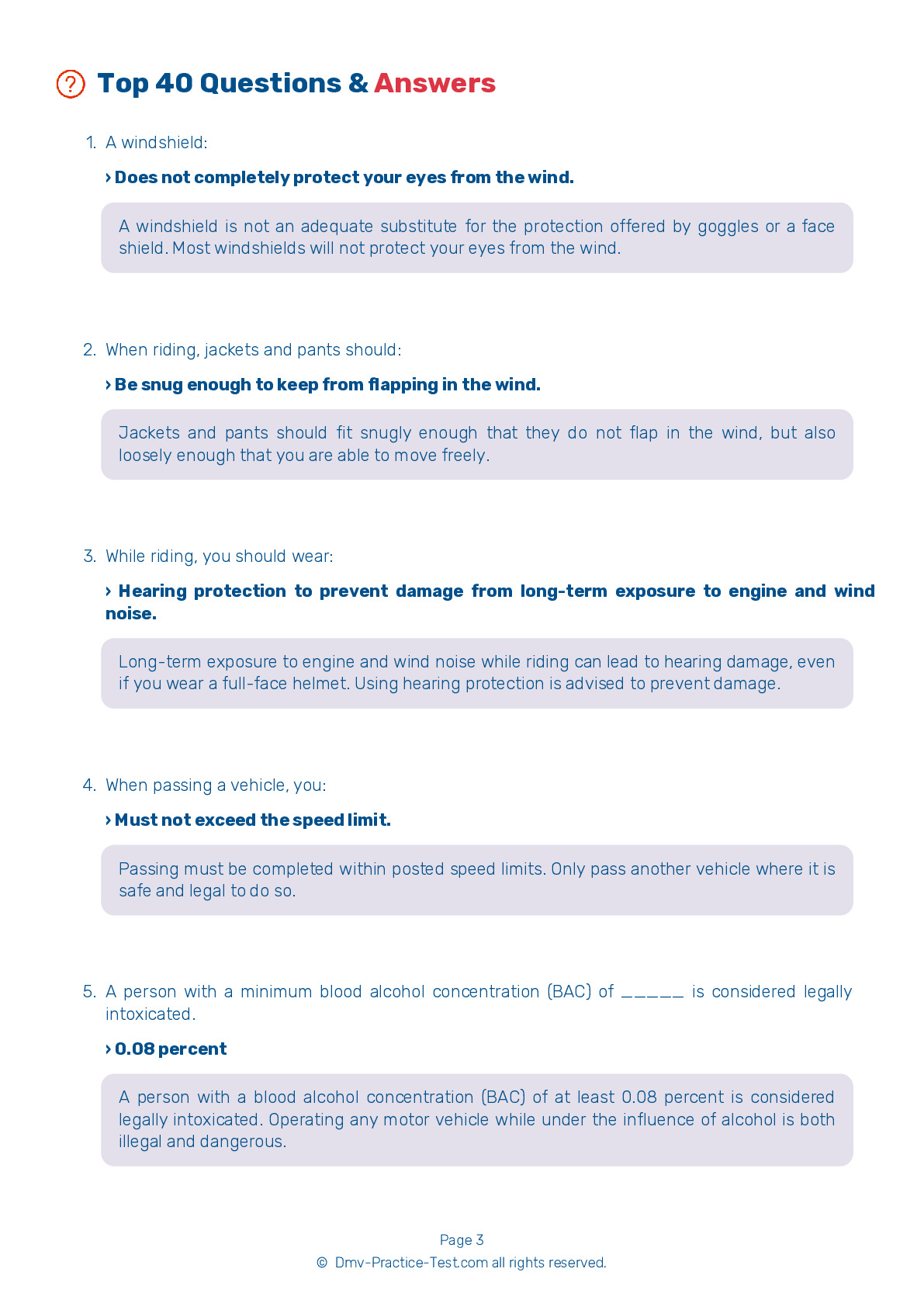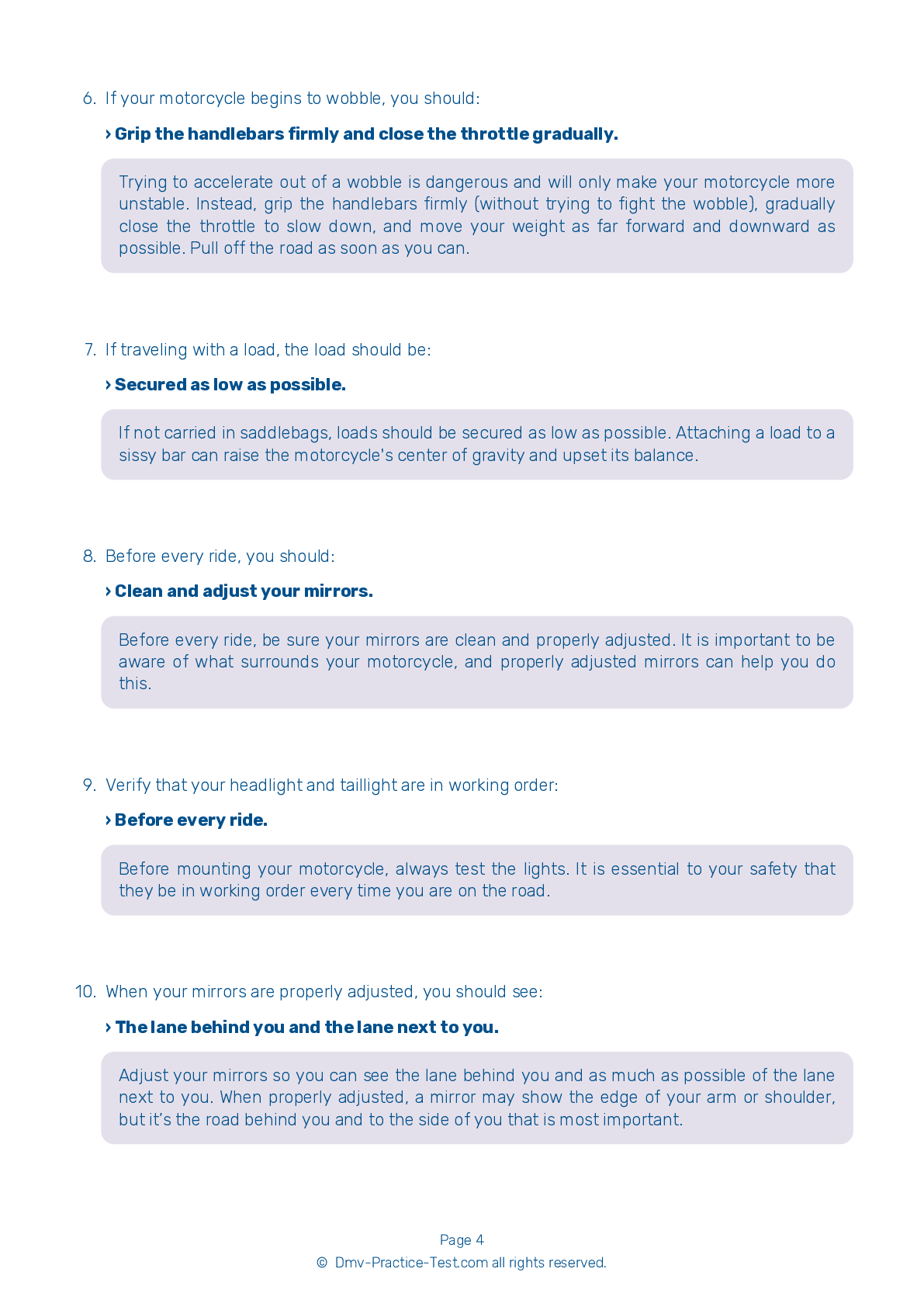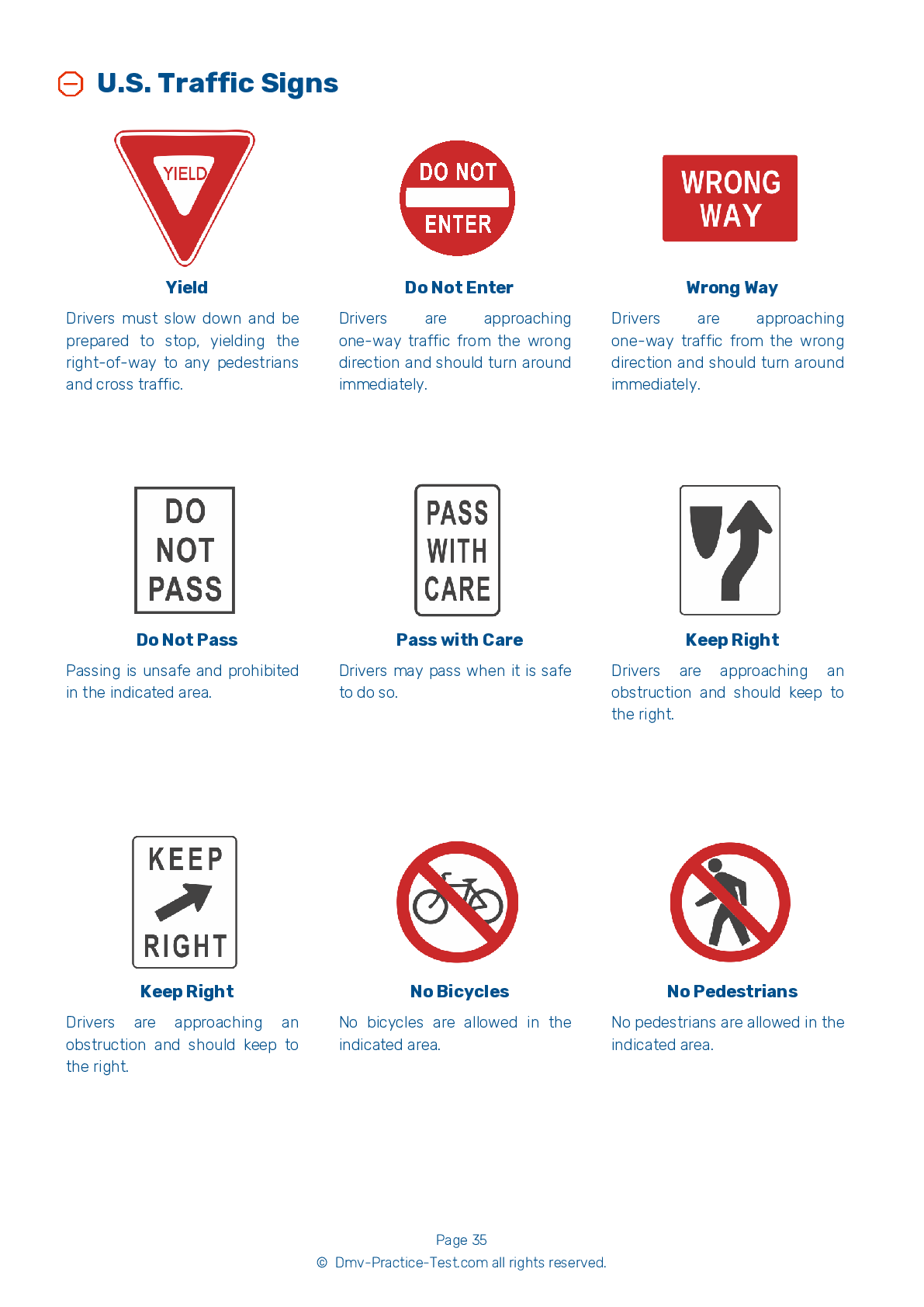Motorcycle Test | License OH 2025 | FREE Online Practice! #12 Page 4 of 5
Take this FREE motorcycle test (license in OH 2025) to check your knowledge of the road rules. To improve your results, download a motorcycle handbook online, study theory, and practice for free on our website. Still worried about how to get a motorcycle license in Ohio in 2025? Check our website for more sample tests, train as much as possible, and boost your grades!
25 . A motorcyclist should attempt to avoid obstacles on the roadway. If avoiding an obstacle is not possible, the motorcyclist should:
If you are unable to avoid an obstacle and must instead ride over it, slow down and approach the obstacle at as close to a 90-degree angle as possible.
26 . To shift up to a higher gear, you must:
To shift up to a higher gear, position your foot under the shift lever and lift.
27 . When approaching a blind intersection, you should:
When approaching a blind intersection, move into the part of the lane that will bring you into an oncoming driver's field of vision at the earliest possible moment. For example, when approaching a blind corner to your right, you may be seen sooner if you are in the left portion of your lane and not in the center portion.
28 . The sign with this shape and color is a _____________ sign.
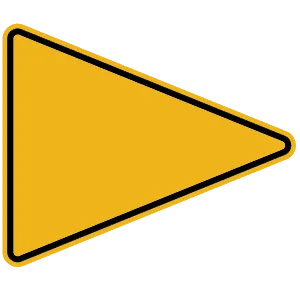
Pennant-shaped warning signs like this are only used to indicate a no passing zone.
29 . When a group of riders is passing another vehicle on a two-lane road, the riders should:
On a two-lane road, a group of motorcyclists should pass one at a time. Each motorcyclist should complete the pass before another begins to pass.
30 . This sign tells you that:
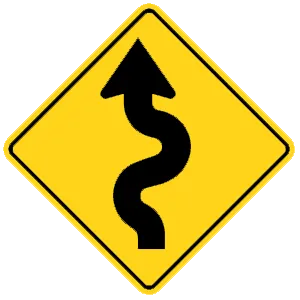
Warning signs are usually yellow with black markings. They alert you to conditions that are immediately ahead. This sign warns drivers about an upcoming winding road.
31 . When a lead rider's left arm is bent at the elbow with their index and middle fingers pointing straight up, it means:
Hand signals are an important part of communication when riding in groups. When the lead rider's left arm is bent at the elbow with their index and middle fingers pointing straight up, it means the group should move into a double-file formation.
32 . This sign means:
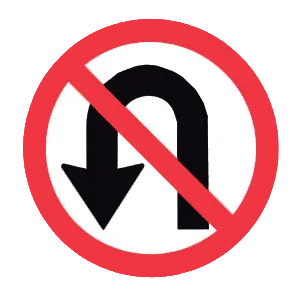
This sign prohibits U-turns. Do not make a U-turn where this sign is posted.
See the exact questions that will be on the 2025 Ohio DMV exam.
99.2% of people who use the cheat sheet pass the FIRST TIME
Jeneen was tired of paying $5/gallon. She got herself a scooter that required the motorcycle license. She studyed the motorcycle test cheat sheet and passed her test the next day!
Christopher tells us how he knew nothing prior to obtaining the motorcycle study guide, and he only got one question wrong because he clicked on the wrong answer by mistake.

